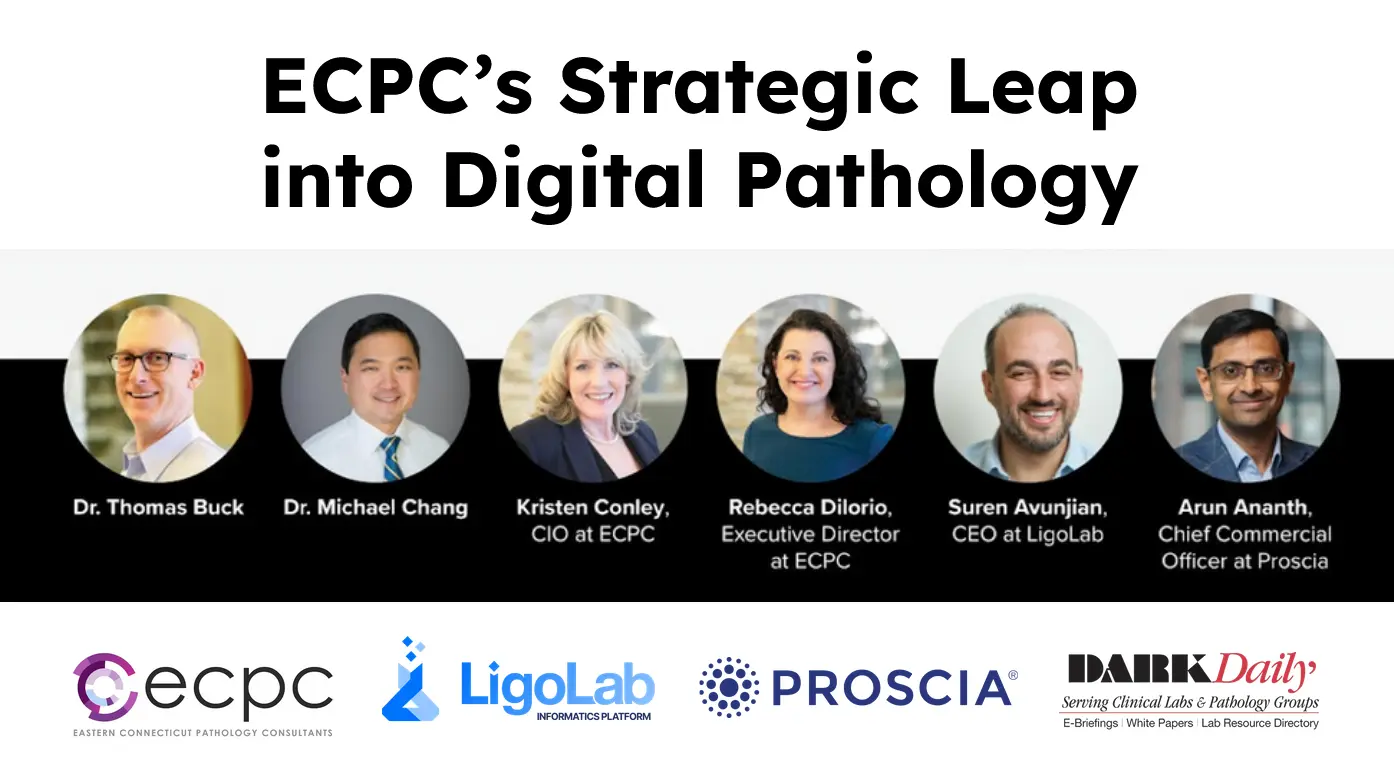Industry Insights
Solving the Medical Laboratory Staffing Shortage with Advanced LIS Systems and Better Support
November 7, 2025
Across the country, pathology laboratories are struggling to find and keep qualified staff. Retirements, burnout, and too few training programs have created a workforce gap that threatens turnaround times, accuracy, and patient care. Some labs are running with vacancy rates near 25 percent (see AACC white paper). Others have been forced to reduce testing or close entirely.
Recruiting more professionals will help, but it’s only part of the solution. To remain efficient and scale, labs need smarter processes and modern pathology lab management technology, beginning with advanced laboratory information systems (LIS software) that automate routine tasks and adapt quickly to change.
Discover More: AACC White Paper on Overcoming Lab Staffing Shortages
A Shortage That’s Getting Worse
The Bureau of Labor Statistics projects 22,000 job openings for lab technologists and technicians each year over the next decade, mostly to replace those retiring or leaving the field. Demand is growing faster than the supply of new graduates.
There are now fewer accredited training programs in the U.S. for medical laboratory scientists. Many schools can’t accept more students because they lack faculty or clinical placement slots. As a result, the industry remains short 20,000 to 25,000 professionals, with only about 335,000 clinical lab workers nationwide.
The CDC estimates that 70 percent of medical decisions rely on laboratory results, yet the people who perform this work are increasingly stretched thin. Heavy workloads, limited pay, and long shifts drive burnout. Surveys show that more than 80 percent of lab professionals report stress or fatigue affecting their job satisfaction.
When staffing levels drop, the impact touches every part of the healthcare system.
On-Demand Webinar: Beat Pathologist Burnout & Combat Staffing Shortages
What’s Driving the Shortfall
The causes for the staffing shortfall are well known:
- Retirement and an aging workforce as baby boomers leave the profession.
- Low visibility of lab careers compared with nursing or pharmacy.
- Fewer training programs and not enough qualified educators.
- Higher education costs that average around $100,000 for a lab science degree.
- Lower starting salaries compared with other healthcare roles.
- Burnout and limited advancement push people to other fields.
At the same time, diagnostic testing continues to expand. Labs now handle molecular and genomic testing that didn’t exist a decade ago, adding complexity without adding people.
Industry Insights: How Modern LIS Systems Empower Labs Through Configurable Reporting, Seamless Integration, and True Partnership
Relief Through Process Improvement and LIS Software Technology
Staffing issues can’t be solved overnight, but medical labs can ease the pressure by making better use of their resources. Process improvements, combined with automation and the best laboratory information system software, can reduce manual work and improve efficiency without compromising quality.
As LigoLab CEO Suren Avunjian explained in a MedCity News article with Dr. James Crawford (linked below), “Process improvements and advanced LIS systems are key areas for lab directors and managers to focus on.”
MedCity News Article: More Talent and Technology Offer Solutions for Medical Laboratory Staffing Shortages
Modern LIS systems support highly configurable workflows that automate repetitive steps like accessioning, order entry, and result validation. They connect directly to analyzers and robotics to reduce manual handling. They track specimens and enforce quality checks automatically, cutting down on rework and errors.
Automation and LIS system flexibility enable medical laboratories to manage high testing volumes even with limited staff. For an example of this, look no further than Avero Diagnostics, which leveraged its modern lab information system and an advanced direct-to-consumer lab testing portal to process over 20,000 PCR tests daily during the COVID pandemic. Automation eliminated all accessioning bottlenecks, a major factor that enabled 98 percent of test results to be reported within 24 hours.
This proved that the right technology can help laboratories maintain accuracy and efficiency, even under extreme workload and staffing pressures.
Discover More: How Modern Laboratory Information Systems Can Protect Against External Threats Like Labor Shortages

Why Modernizing LIS Systems Matters
Many labs still rely on legacy LIS systems that were built decades ago and can’t easily scale or integrate with new laboratory software systems. These medical LIS relics often require manual data entry and lack rules, automation, analytics, and interoperability with electronic health records (EHRs).
Upgrading to a modern LIS system platform solves these problems by:
- Automating routine work so staff can focus on interpretation and quality control.
- Integrating with instruments and laboratory billing systems to eliminate duplicate entry.
- Improving turnaround time through streamlined sample routing and result reporting.
- Reducing errors with audit trails, specimen tracking, and rule-based validation.
- Supporting scalability as test volumes and sites grow.
When configured correctly, a single modern LIS software can unify all lab operations, from order creation through lab billing and analytics, giving staff one robust and reliable LIS lab solution to work from.
Industry Insights: The Rise and Fall of CoPath LIS - A Legacy Casualty of the Modern Lab Information System Era
A Practical Roadmap to Modernization
For labs ready to modernize and upgrade their LIS systems, these steps can guide the process:
- Assess Current Workflows: Identify where manual steps or bottlenecks exist. Measure turnaround times, overtime, and error rates.
- Define Goals: Set targets such as reducing manual accessioning by 30 percent or cutting TAT for STAT tests by half.
- Build a Business Case: Estimate labor savings and productivity gains. Include cost avoidance from fewer errors and less overtime.
- Select the Best LIS vendor: Look for a laboratory information system platform with your lab’s best interests in mind, one that supports all lab disciplines, integrates with existing instruments and laboratory billing systems, and offers configurable automation rules.
- Train and Involve Staff: Make sure employees understand how automation changes their role and relieves manual workload.
- Measure Results and Expand. Track efficiency and quality metrics, then roll out automation to other departments.
When staff see that new LIS systems reduce busywork instead of replacing them, acceptance and morale improve.
Discover More: Four Game-Changing Business Strategies to Improve Laboratory Processes
A Balanced Approach
Technology isn’t a substitute for people, but it can help medical labs remain relevant despite the lack of a deep workforce pipeline. Automation handles repetitive work. A modern LIS system keeps data organized, compliant, and accurate. Together, they let skilled professionals focus on what only humans can do: interpret results, solve problems, and ensure quality care.
At the same time, investments in education, training, and policy support are essential. The Medical Laboratory Personnel Shortage Relief Act of 2025 could help attract new talent and relieve financial barriers for students. Expanding program capacity and raising awareness about lab careers will also make a difference.
Moving Forward
The medical laboratory staffing shortage has been years in the making and won’t disappear soon. But labs that take action now can protect themselves from further disruption. Strengthening recruitment and retention, improving processes, and modernizing their LIS systems are all practical steps within reach.
Vacancy rates near 25 percent show that the old way of operating no longer works. Laboratories that embrace automation and flexible, connected LIS software will be better equipped to maintain accuracy, speed, and financial health, even with fewer hands on deck.
Adapt and Advance
Here’s your chance to discover how automation and connected LIS software keep labs moving forward despite the very real challenges all testing organizations face. Contact a LigoLab product specialist today and step into the future of pathology lab management.






